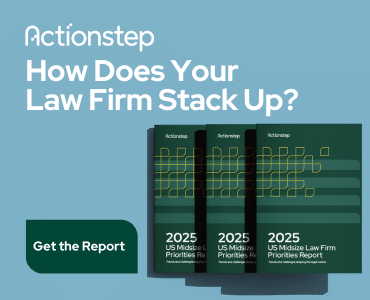You can spend thousands of dollars on marketing campaigns, but if you are not managing them well, you will waste a lot of money.
In Part One, we talked about the basics of online legal marketing: advertising, SEO, social media and email marketing. Now let’s dive into the six areas that are key to effectively managing your marketing and converting leads into paying clients.
Create Simple Processes to Optimize Your Pipeline
The first step is to take a look at the big picture of your new client workflow. You should know the answer to these questions:
- Who answers your phone when someone calls your firm?
- What happens when someone calls during off-hours?
- How quickly does a lawyer respond?
- How are leads tracked through your pipeline?
- How long before they get a consultation?
- How often do you follow up after the consultation to get a signed retainer?
- How long before they retain you?
- How do you get and process the retainer?
If you don’t know the answers, or your answer is “it depends,” then you need to standardize that aspect of your workflow and create a process for it.
Internet Leads Are Different
You can’t treat new client leads from the internet the same way you’ve historically treated referrals. Personal referrals will probably come back to you if you don’t get back to them right away. Internet visitors will not.
People who visit your website and call your firm have nothing keeping them tied to you. You have to pick up the phone when they call the first time, or you’re going to be much more likely to lose them.
If someone is referred to your firm, they want to work with you. You and your services were recommended to them, and they most likely will give you second a chance. But if someone is in urgent need of a lawyer and turns to the internet, they’ll do some research and call the first lawyer they qualify. If that is you and you don’t get back to them right away, they may call the second or third or fourth option.
This is why standardized processes for intake and retention are so important. You can optimize your marketing so that you generate many new potential clients, but if you can’t handle leads properly, you’re throwing money away. That results in a much higher cost to get a new client.
With that being said, here are ways to help you optimize your pipeline for new client calls and retention.
Call Tracking
You need to know where your potential clients are coming from. Otherwise, how do you know if your campaigns are working?
You can spend $5,000 per month on an ad campaign, but if all you know is “they said they found me through Google,” you don’t know if that means organic or paid. You could be running a terrible paid ad campaign and not know it.
One way to remedy that is to sign up for a call-tracking service such as CallRail. Call tracking assigns a phone number or a pool of phone numbers for your firm to use. You get phone numbers on your website, in print advertisements, or on your business cards. When a prospective client calls the number, they reach your firm’s main phone number (or whichever number you wish).
Meanwhile, each call gets logged in your call-tracking system as one new lead. It also takes down your visitor’s caller ID, call duration, location (if available), and what page they visited on your website when they called.
Some lawyers are concerned about having a phone number that isn’t the firm’s main office number on their business card, TV ad or website. But the benefits outweigh the costs. You actually get to know how people found you and attribute every single lead to the appropriate marketing channel. Imagine if you knew for certain that your Yellow Pages ad got you exactly two phone calls. While you may have had a hunch, call tracking proves it.
Intake
What happens when someone calls your firm? Do you have an answering service or a receptionist? What happens when it’s after-hours? Are you running a paid ad campaign when you are not able to answer the phone? If so, that’s potentially a huge waste of advertising dollars.
Run a test. Call your law firm and go through the process yourself (or have a friend do it). Do you receive a friendly greeting? This is the first direct encounter someone has with your firm, so don’t overlook it. Make sure that whoever answers the phone is friendly, polite and gets all the information they need to pass off to a lawyer and to be entered into your client relationship (CRM) or practice management system.
As part of the intake process, everything must go into your CRM system, so the next steps are ready to go.
CRM
How are potential clients being tracked by the firm? Leads should not just be handed off to a lawyer. Often, you will need to call your potential clients back multiple times, leaving several voicemails and sending a few emails before hearing back from them.
If you are not tracking what has been done for a potential client and what you have to do next, you potentially lose them.
Follow-Up
Some firms get a new lead and reach out only once. If you end up leaving a voicemail or even reaching them the first time, you still need to follow up until the retainer agreement is signed. Keep reaching out, every day or every other day, until the potential client either says, “Please call me back on X day,” or “Let’s get started,” or “I hired another lawyer.” Without a definitive response, assume they are still figuring things out and follow up with them politely, but often.
A big mistake I’ve seen many lawyers make is having a 30-minute free consultation, and then not following up. They assume: “If they’re interested they will call back.” And that’s not always the case. Sometimes people get distracted or busy. Always continue to follow up until you get a yes or a no.
(Related: “Follow Up to Increase Your Chances of Getting Business” by Sally Schmidt)
Engagement
When you get that “yes” from a prospective client, the easier and quicker it is to get them across the finish line, the better. Make signing a retainer agreement as effortless as possible. Use e-signature software like DocuSign or HelloSign.
(Related: “Fee Tale: This Is Not Your Father’s Retainer Agreement” by Jared Correia)
Wrapping Things Up
You don’t need to make all the common mistakes that many firms make with their marketing. Plenty of law firms have found success with building their business by implementing these strategies. Save yourself time and expense by building your marketing campaigns right, from the ground up.
Best of luck!
Adapted from “The Secrets to Marketing and Automating Your Law Practice: A Lawyer’s Guide to Creating Systems, Getting Clients, and Becoming a Legal Rainmaker” by David M. Bitton (Practice Panther, 2018). Download the PDF version of the book here or buy the soft-cover or Kindle version of the book on Amazon (at cost).

















